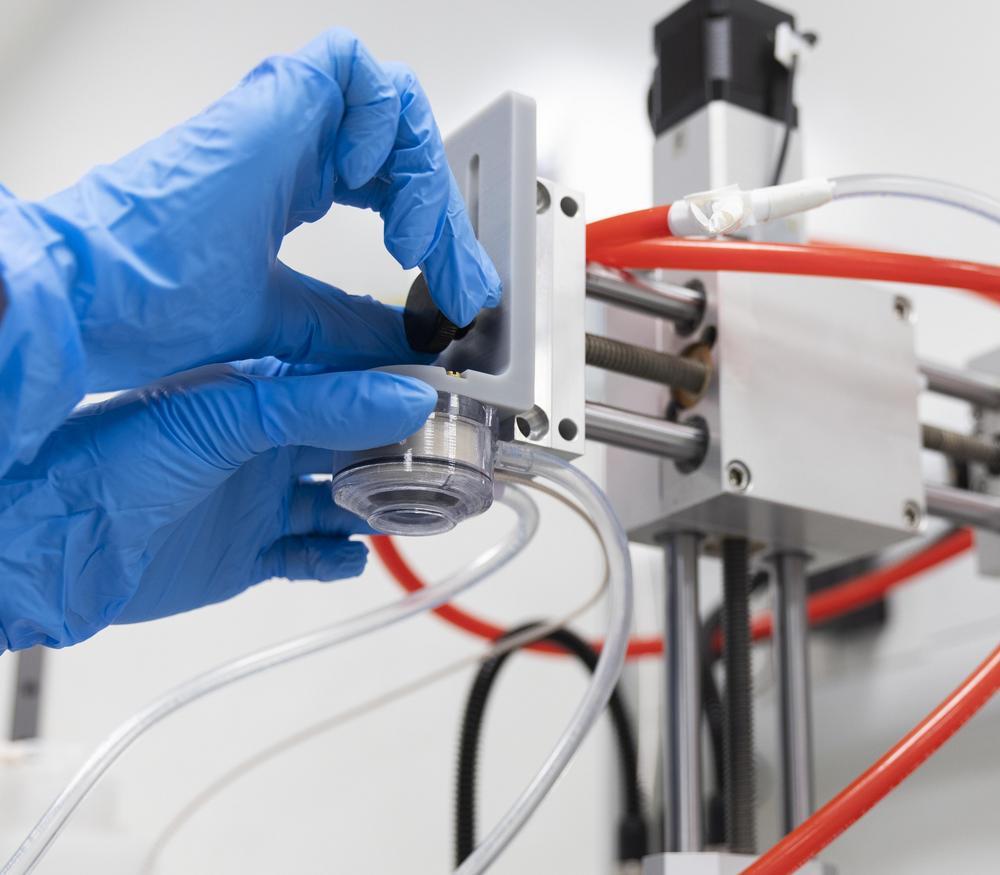Preclinical imaging provides visual evidence to support drug development, from whole-body pharmacokinetics to molecular-level target engagement.
By combining functional and structural imaging, this technology allows you to assess whether your therapeutic reaches the site of interest, engages the intended target, and produces the desired biological effect.
We offer advanced preclinical imaging services, enabling you to make earlier, more informed decisions.
Our infrastructure includes multimodal imaging platforms, dedicated radiochemistry capabilities, and a team of experts to ensure your study is tailored to both your compound and research question.

We provide a suite of in vivo imaging solutions designed to deliver high-fidelity data and actionable insights to support informed decision-making across therapeutic areas.
Our approach integrates advanced imaging biomarkers with disease-relevant tissue models to ensure each dataset is biologically meaningful and clinically informative.
From molecular imaging of disease pathways to whole-body biodistribution studies, our platform enables dynamic assessment of drug behaviour in real time.
Whether you are evaluating exposure, binding, or efficacy, we apply the right technology for each question, saving time, reducing risk, and improving confidence as you move through the drug discovery process.
Our team of scientists and technical staff are eager to partner with you on your drug development goals to make faster decisions. Our comprehensive in vivo preclinical imaging and data analysis solutions include:
Positron Emission Tomography (PET)
Used to visualise and quantify the biodistribution and target engagement of radiolabelled compounds in real time, supporting pharmacokinetic and pharmacodynamic analysis.
Gamma counting biodistribution analysis
Provides quantitative measurement of radioactivity in excised tissues, offering high-sensitivity insight into compound uptake and tissue penetration at specific time points.
Computed Tomography (CT)
Delivers detailed anatomical reference images, enabling precise co-registration with functional imaging data for accurate spatial localisation of biological signals.
High-Frequency Ultrasound (HFUS)
Allows real-time imaging of soft tissues, tumours, and vasculature to monitor anatomical changes and physiological responses to treatment.
Bioluminescence and near-infrared imaging (IVIS)
Supports non-invasive longitudinal studies of gene expression, cell tracking, and tumour burden using light-based reporters in live tissue models.
Radiochemistry
Enables on-site radiolabelling of small molecules, peptides, and biologics with clinically relevant isotopes, supporting the development of imaging probes and radiopharmaceuticals.
Positron Emission Tomography (PET) – (Molecubes PET/CT scanner)
Gamma counting biodistribution analysis – (Revitty Wallac Wizard)
Computed Tomography (CT) – (Molecubes PET/CT scanner)
High-Frequency Ultrasound (HFUS) – (Fujifilm VEVO3100 imaging system)
Bioluminescence/NIR imaging (IVIS) – (Revitty IVIS Lumina)
Radiochemistry – (Beta and Gamma lab 89Zr, 18F, 111In, 23Pb, 177Lu) and (alpha lab 225Ac and 212Pb
Focused Ultrasound
Radiotherapy – (Multirad)
“Preclinical Imaging allows us to see what other methods can not. By performing real-time visualisation of drug distribution and biological response, we are bringing clarity to complex questions, and helping our partners to make faster, better-informed decisions.”
Dr Juliana Maynard, Head of Translational Imaging


We will help you to create a tailored preclinical imaging strategy to answer your most important questions.
Fill in the form today and speak to us to see how we can help advance your drug discovery project.